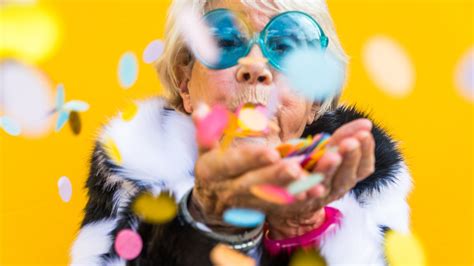
A rescue dog named Goose, who lost his beloved stuffed animal on a roadside in Oklahoma, has been comforted with a replacement, thanks to the kindness of strangers and a bit of luck – his original stuffie now has a twin.
Goose, a dog rescued by the team at Skiatook Paws & Claws Animal Rescue, became attached to a specific stuffed toy during his recovery. The rescue shared the story of Goose’s lost companion on social media, hoping to find the toy or at least replace it. Their efforts were met with an outpouring of support, ultimately leading to a heartwarming resolution.
According to Skiatook Paws & Claws, Goose arrived at their shelter in need of significant care. The team provided medical attention and a nurturing environment, and Goose quickly bonded with the plush toy, carrying it with him everywhere. “Goose came to us needing some TLC,” the rescue organization shared on their Facebook page. “He always had his stuffy with him.”
Tragedy struck when Goose and his handlers were traveling and the stuffed animal fell out of the vehicle unnoticed. Upon realizing the toy was missing, the rescue team was heartbroken for Goose, noting the distress he experienced without his familiar comfort object.
They turned to social media, posting a picture of Goose with the missing toy and asking for help in locating it or finding a replacement. “We are reaching out in hopes someone may have seen it or even picked it up,” the post stated. The response was overwhelming, with shares, comments, and offers of assistance flooding in from across the country.
Among those who saw the post was a woman who recognized the stuffed animal as one her own dog had. She immediately contacted Skiatook Paws & Claws and offered to donate a duplicate of the toy to Goose. The rescue team gratefully accepted, and Goose was soon reunited with a near-identical version of his lost friend.
“We were so touched by the outpouring of support,” said a representative from Skiatook Paws & Claws. “It really shows how much people care about animals and want to help in any way they can.”
The story of Goose and his lost-and-found stuffie has resonated with many, highlighting the emotional bonds animals form with inanimate objects and the compassion of the online community.
The Road to Recovery: Goose’s Journey to Skiatook Paws & Claws
Before becoming the internet sensation he is today, Goose faced a challenging start to life. Details surrounding his initial discovery and condition prior to arriving at Skiatook Paws & Claws are not extensively detailed in the source article, but it’s clear that he required significant medical attention and care upon arrival. This is a common scenario for rescue animals who often come from situations of neglect, abandonment, or abuse. The rescue organization specializes in providing these animals with the necessary resources to heal and thrive.
The Skiatook Paws & Claws Animal Rescue plays a vital role in the community, offering shelter, medical care, and adoption services for animals in need. They operate primarily through donations and volunteer efforts, relying on the generosity of the public to continue their work. Rescue organizations like Skiatook Paws & Claws are crucial in addressing the issue of animal homelessness and providing second chances for animals like Goose.
The Significance of the Stuffed Animal
For many animals, especially those who have experienced trauma or instability, comfort objects like stuffed animals can provide a sense of security and familiarity. These objects can act as surrogate companions, offering a constant source of comfort in unfamiliar or stressful environments. The attachment Goose formed with his stuffed animal is a testament to this phenomenon. The toy likely provided him with a sense of calm and stability as he adjusted to his new surroundings and underwent medical treatment.
The loss of the stuffed animal, therefore, was a significant event for Goose. It represented the disruption of his routine and the removal of a key source of comfort. This explains the distress the rescue team observed in Goose after the toy went missing.
The Power of Social Media and Community Support
The story of Goose’s lost stuffie highlights the power of social media in mobilizing community support. Skiatook Paws & Claws’ decision to share the story on Facebook proved to be instrumental in the successful search for a replacement. The post reached a wide audience, generating shares, comments, and offers of assistance from people who were moved by Goose’s plight.
This incident demonstrates how social media can be used to raise awareness about animal welfare issues and connect rescue organizations with potential donors, volunteers, and adopters. The online community’s willingness to help Goose is a testament to the compassion and empathy that exists within society.
The fact that a woman recognized the stuffed animal and offered to donate a duplicate is a particularly heartwarming aspect of the story. It shows that people are not only willing to offer financial support but also to go the extra mile to help an animal in need.
The Broader Context of Animal Rescue
Goose’s story is just one example of the countless animals who are rescued and rehabilitated by organizations like Skiatook Paws & Claws every year. Animal rescue is a complex and challenging field that requires dedication, compassion, and significant resources. Rescue organizations face numerous obstacles, including limited funding, overcrowding, and the emotional toll of working with animals who have experienced trauma.
Despite these challenges, rescue organizations continue to play a vital role in protecting animal welfare and promoting responsible pet ownership. They provide essential services such as shelter, medical care, spay/neuter programs, and adoption services. They also work to educate the public about the importance of animal welfare and the responsibilities of pet ownership.
The Importance of Responsible Pet Ownership
While Goose’s story has a happy ending, it also serves as a reminder of the importance of responsible pet ownership. Ensuring that pets are properly cared for, vaccinated, and microchipped can help prevent them from becoming lost or abandoned. Supporting local animal shelters and rescue organizations through donations, volunteer work, or adoption can make a significant difference in the lives of animals in need.
The act of securing items transported with pets, like Goose’s beloved stuffie, may seem minor but can prevent heartbreak. Pet owners should always be mindful of their pet’s belongings during travel.
Conclusion: A Heartwarming Tale of Compassion
The story of Goose and his lost-and-found stuffie is a heartwarming tale that demonstrates the power of community support and the emotional bonds animals form with inanimate objects. It highlights the important work of animal rescue organizations like Skiatook Paws & Claws and the compassion of individuals who are willing to help animals in need. Goose’s story serves as a reminder that even small acts of kindness can make a big difference in the lives of animals and the people who care for them. The narrative underscores the significance of responsible pet ownership and the positive impact of social media in mobilizing support for animal welfare causes. Through this heartwarming narrative, readers are reminded of the inherent value of compassion and the profound connections that can be forged between humans and animals.
Frequently Asked Questions (FAQ)
-
What happened to Goose’s original stuffed animal?
Goose lost his beloved stuffed animal while traveling. According to Skiatook Paws & Claws, the toy fell out of the vehicle unnoticed. The exact location where it was lost is not specified in the article.
-
How did Goose get a replacement stuffed animal?
Skiatook Paws & Claws shared Goose’s story on social media, hoping to find the original toy or a replacement. A woman who saw the post recognized the stuffed animal as one her own dog had and offered to donate a duplicate.
-
Where did Goose come from before arriving at Skiatook Paws & Claws?
The details surrounding Goose’s initial discovery are not extensively detailed in the source article. However, it’s clear that he required significant medical attention and care upon arrival, suggesting he likely came from a situation of neglect, abandonment, or abuse.
-
Why was the stuffed animal so important to Goose?
For many animals, especially those who have experienced trauma or instability, comfort objects like stuffed animals can provide a sense of security and familiarity. The toy likely provided Goose with a sense of calm and stability as he adjusted to his new surroundings and underwent medical treatment.
-
How can I help Skiatook Paws & Claws Animal Rescue?
Skiatook Paws & Claws Animal Rescue operates primarily through donations and volunteer efforts. You can support them by making a donation, volunteering your time, or adopting an animal in need. You can visit their website or social media pages for more information on how to get involved.
Expanded Analysis: The Psychological Impact of Loss on Animals
The emotional response exhibited by Goose following the loss of his stuffed animal offers a glimpse into the complex psychological landscape of animals. While human emotions are often acknowledged and validated, the emotional lives of animals are frequently underestimated or dismissed. However, a growing body of research suggests that animals are capable of experiencing a wide range of emotions, including grief, anxiety, and attachment.
The bond that Goose formed with his stuffed animal is a clear example of attachment behavior. Attachment, in the context of animal psychology, refers to the close emotional connection that an animal forms with another individual or object. This attachment can provide a sense of security, comfort, and stability, particularly in stressful or unfamiliar situations.
When an animal experiences the loss of an attachment figure, whether it be a human caregiver, another animal companion, or a cherished object, they can experience a range of emotional and behavioral changes. These changes can include:
- Increased anxiety and stress: The loss of a familiar source of comfort can trigger feelings of anxiety and stress. Animals may become more clingy, restless, or vocal.
- Changes in appetite and sleep patterns: Grief can affect an animal’s appetite and sleep patterns. They may lose interest in food or experience difficulty sleeping.
- Withdrawal and depression: Some animals may become withdrawn and less interactive following a loss. They may spend more time alone and exhibit signs of depression.
- Search behavior: Animals may actively search for the missing individual or object. This can manifest as pacing, whining, or repeatedly returning to the location where the loss occurred.
In Goose’s case, the rescue team observed distress in him after the stuffed animal went missing, suggesting that he was experiencing some of these emotional and behavioral changes. The fact that he was soothed by the replacement toy highlights the importance of providing comfort and support to animals who are grieving.
The Role of Anthropomorphism in Understanding Animal Emotions
When discussing animal emotions, it’s important to address the concept of anthropomorphism. Anthropomorphism is the attribution of human characteristics or behaviors to animals or inanimate objects. While it’s important to avoid projecting human emotions onto animals without sufficient evidence, it’s also crucial to recognize that animals are capable of experiencing emotions in their own way.
Researchers and animal behaviorists are increasingly using scientific methods to study animal emotions. These methods include observing animal behavior, measuring physiological responses, and conducting cognitive tests. By combining these methods with careful observation and empathy, we can gain a deeper understanding of the emotional lives of animals.
The Ethical Implications of Recognizing Animal Emotions
Recognizing that animals are capable of experiencing emotions has significant ethical implications. It challenges the traditional view of animals as mere commodities or resources and calls for a more compassionate and respectful approach to animal welfare.
If animals are capable of experiencing suffering, then we have a moral obligation to minimize their suffering and protect their well-being. This includes providing them with adequate food, shelter, and medical care, as well as ensuring that they are treated with kindness and respect.
The story of Goose and his lost stuffie serves as a reminder that animals are sentient beings who deserve our compassion and protection. By recognizing their emotional needs and providing them with the care and support they need, we can create a more just and humane world for all living creatures.
The Economic Impact of Animal Rescue Organizations
Beyond the emotional and ethical considerations, animal rescue organizations like Skiatook Paws & Claws also have a significant economic impact on their communities. These organizations contribute to the local economy in several ways:
- Creating Jobs: Animal rescue organizations employ staff members, including veterinarians, animal care technicians, and administrative personnel.
- Purchasing Goods and Services: Rescue organizations purchase goods and services from local businesses, such as pet food, veterinary supplies, and building materials.
- Attracting Tourism: Some rescue organizations attract tourists who are interested in visiting the shelter and learning more about their work.
- Reducing Animal Control Costs: By providing shelter and adoption services, rescue organizations help reduce the burden on local animal control agencies.
In addition, animal rescue organizations often generate significant economic benefits through the adoption of animals. Adopted pets contribute to the pet industry by requiring food, supplies, and veterinary care. They also provide companionship and emotional support to their owners, which can improve their overall well-being and productivity.
The Future of Animal Rescue
The field of animal rescue is constantly evolving. As our understanding of animal behavior and welfare grows, rescue organizations are adapting their practices to better meet the needs of the animals in their care. Some of the trends shaping the future of animal rescue include:
- Increased Focus on Behavioral Rehabilitation: Rescue organizations are increasingly focusing on providing behavioral rehabilitation to animals who have experienced trauma or neglect. This can include training, socialization, and enrichment activities.
- Greater Use of Technology: Technology is playing an increasingly important role in animal rescue. Rescue organizations are using social media to raise awareness, online databases to track animals, and telehealth to provide veterinary care remotely.
- Collaboration and Partnerships: Rescue organizations are increasingly collaborating with other organizations, such as animal shelters, veterinary clinics, and community groups, to expand their reach and impact.
- Advocacy and Policy Change: Rescue organizations are advocating for policy changes that will improve animal welfare, such as stricter animal cruelty laws and increased funding for animal shelters.
The story of Goose and his lost stuffie is a testament to the resilience of animals and the power of human compassion. As we continue to learn more about the emotional lives of animals and the challenges they face, we can work together to create a more just and humane world for all living creatures. The work of animal rescue organizations like Skiatook Paws & Claws is essential in this effort, and their dedication and compassion deserve our support. By understanding the multifaceted aspects of animal rescue, from the psychological impact of loss on animals to the economic contributions of rescue organizations, we can better appreciate the importance of their work and contribute to a future where all animals are treated with kindness and respect. The ongoing evolution of animal rescue practices, driven by advancements in understanding animal behavior and welfare, holds promise for even more effective and compassionate care for animals in need.









